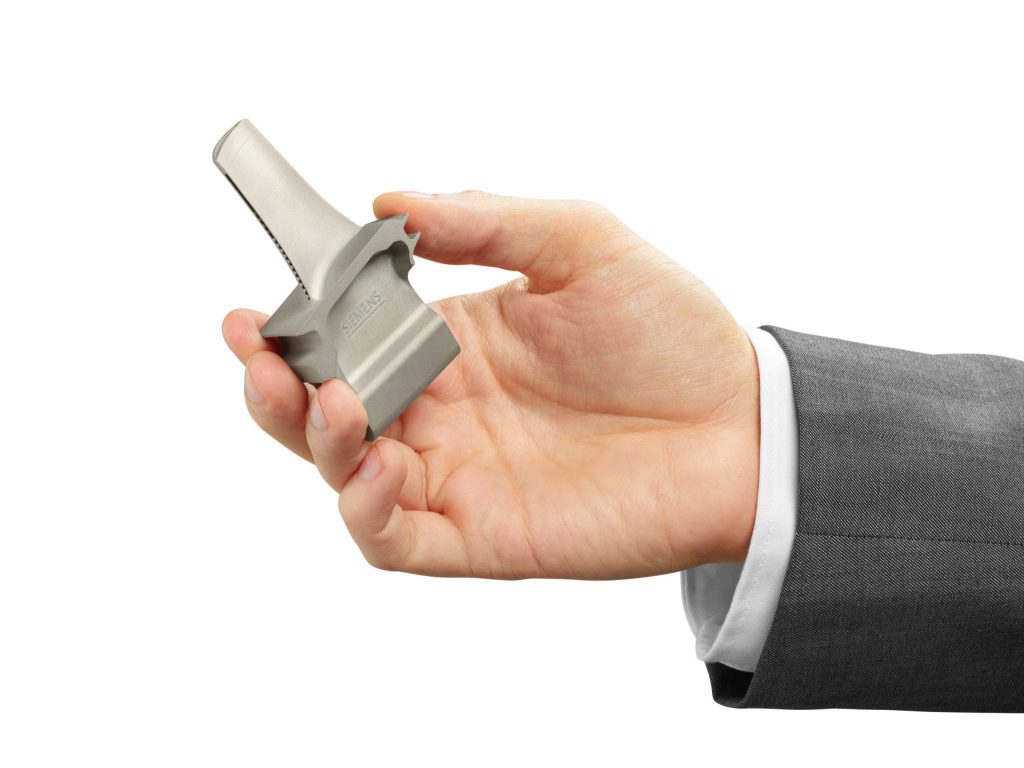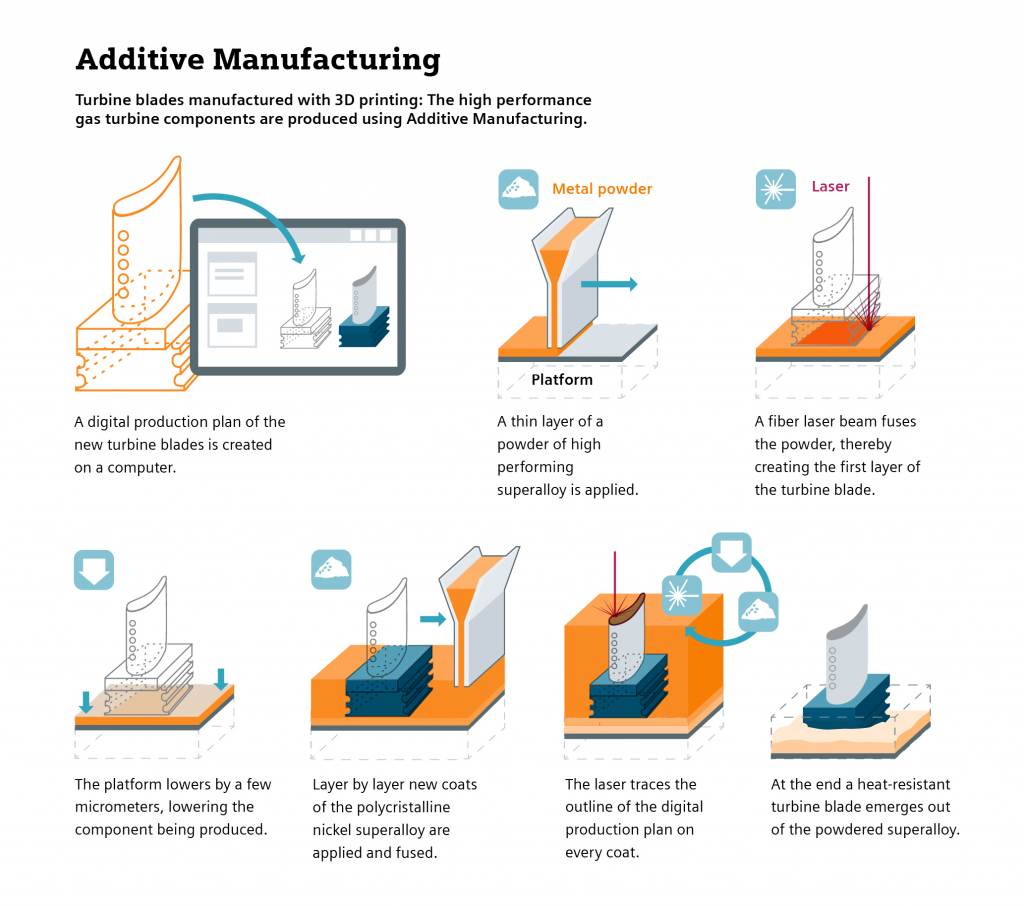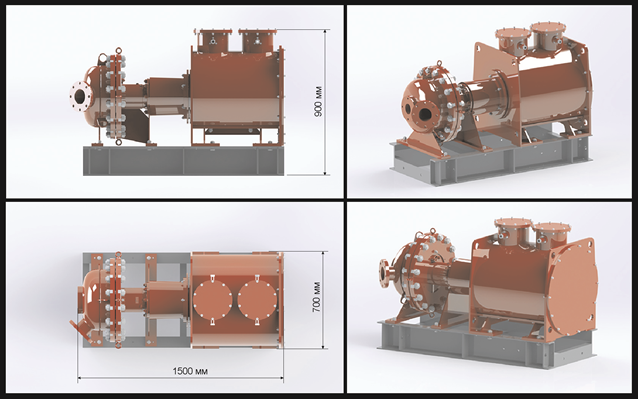Innovation enabled by 3D printing in the energy market is evident this week in two pieces of news. 3D printed combustion engines from the German technology conglomerate Siemens (ETR:SIE), and Peter the Great St. Petersburg Polytechnic University (SPbPU) in Russia, show potential for fast production turnarounds, and a greener energy generating future.
Superalloy blades from Siemens
Engineers from Siemens facilities in the UK, Sweden, and Germany, and the UK based Materials Solutions, have taken additive manufactured gas turbine blades from the computer aided design stage through to quality control. By using 3D printing the process took eighteen months, and is up to 90 percent faster than the atypical method. Lead times for the replacement of gas turbine blades and other components for the energy market alone can be in excess of a year, so going from design to testing in this time frame is remarkable.

The finished blades are 3D printed using laser melting and a powdered nickel superalloy – a metal with high potential for use in the aerospace industry and also undergoing NASA-funded research.

Installed in a Siemens SGT-400 gas turbine, the blades are subject to intense pressures to convert natural gas into mechanical energy.
Testing the 3D printed turbine blades in Lincoln UK. Clip from Siemens achieves breakthrough with 3D printed gas turbine blades by Siemens on YouTube.
The 3D printed turbine blades travel at a rate of over 1,600 km/h, and can withstand 1,250 °C of surrounding heat with rapid cooling at 400°C. When running, the blades also move the equivalent weight of a full-to-capacity London bus (11 tons).
Willi Meixner, CEO of the Siemens Power and Gas Division, had the following to say about the turbine blade production:
We can accelerate the development of new gas turbine designs with an increased efficiency and availability and can bring these advancements faster to our customers. This new flexibility in manufacturing also allows Siemens to develop closer to the customer’s requirements and also to provide spare parts on demand.
The company further enhanced its metal 3D printing technologies earlier in January 2017 in a partnership with German 3D printer manufacturers Trumpf.
Making use of wasted energy
Another development in the oil and gas markets using 3D printing comes from Russia. This year, an electric generator featuring plastic 3D printed components and developed by SPbPU is due to be installed in a St. Petersburg suburb. The generator operates on high-pressure natural gas and the research, “investigates an expansion turbine for the trigger of a significant pressure drop at a low volume flow of natural gas with an electrical power of 1 kW, which is manufactured by 3D printing the plastic parts of the turbine.”
The turbo expander is designed to make use of thermal energy lost by power stations in the compression of natural gas. The is made from PA-12 (12 carbon nylon), and generates energy at temperatures up to 90°C.

Combined, these developments show promising results for energy generation on both sides of the process. By using additive manufacturing, both projects save energy, materials and the valuable resource of time spent during longer production processes. Application in the second instance also shows a cost-efficient method of saving waste that would otherwise be damaging to the environment.
We’re looking for nominations for innovation in the first Annual 3D Printing Awards here.
To stay up-to-date with the current additive manufacturing news, sign up to the 3D Printing Industry newsletter here, or follow us on Twitter.
Featured image shows 3D printed nickel supper alloy turbine blades. Photo via: Siemens



